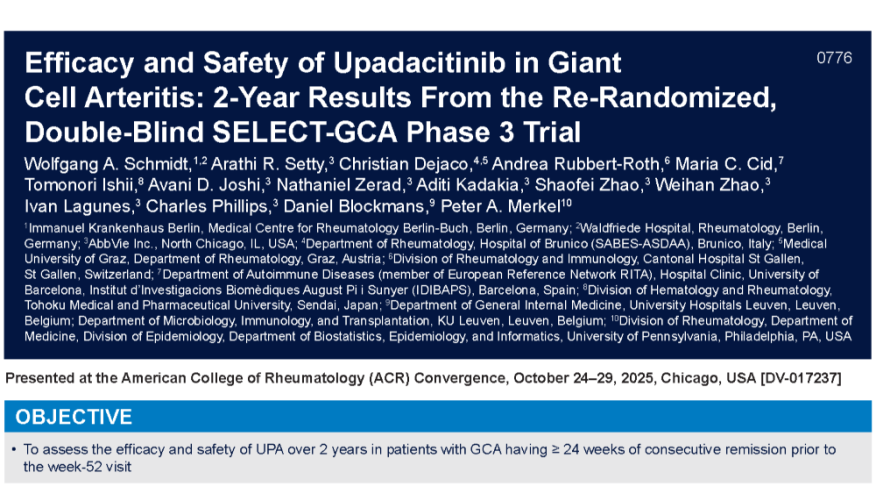My Experience as a COVID19 Vaccine Trial Participant Save
I have been an investigator for many clinical rheumatology studies over the past two decades but have never been a study subject until now. I wanted to document my experience and allay any fears about the vaccine or the clinical trials process. I understand how clinical trials are conducted; with any investigational product before it can be available to the public, it undergoes rigorous scrutiny by the FDA, particularly by the main consumer watchdog in the system, the Center for Drug Evaluation and Research (CDER).
With the urgency of the pandemic, the process is even more intense. The NIH and its Foundation for the first time; brought together multiple organizations including leading biopharmaceutical companies, the CDC, the HHS Office of the Assistant Secretary for Preparedness and Response, and the European Medicines Agencies to form the Accelerating COVID-19 Therapeutic Interventions and Vaccines (ACTIV) partnership. The collaborative network prioritizes “vaccine and drug candidates, streamlining clinical trials, coordinating regulatory processes and/or leveraging assets among all partners to rapidly respond to the COVID-19 and future pandemics.”1
So when presented with the opportunity to participate in a clinical study evaluating a vaccine’s effectiveness, I knew this was an important step to get us closer to the end of the pandemic.
I enrolled in the phase 3 trial of the Pfizer/BioNTech mRNA vaccine against SARS-CoV2 (protocol C4591001) on October 31, 2020. The study's goal was to enroll 44,193, and the Dallas study site committed to 500 study subjects; I was participant number 500. Based on the consent form I was given, participants in a 1:1 observer-blinded randomized placebo control manner receive either saline (without adjuvants/preservatives) or the BNT162b2 vaccine candidate in 2 doses separated 21 days apart. The study required regular follow-up and blood draws; it could last for up to 26 months. The vaccine contains the virus's RNA that will utilize the body's cell to produce the spike protein seen on the coronavirus, thereby inducing antibodies against the virus. The study’s endpoint was to have 164 cases of COVID19 among trial participants to be able to evaluate the efficacy of the vaccine. Primary outcome measures include: local reactions, systemic events, adverse events, serious adverse events, and hematologic/chemistry assessments. Secondary outcomes include SARS-CoV-2 presence of neutralizing antibody levels, 4-fold rise of antibodies, and confirmed COVID19 infection.
When I arrived at the study site, my temperature was 98.4F; I reviewed and signed the consent form with the investigator. Labs and a nasal swab for the coronavirus were obtained. The clinical research coordinators were knowledgeable and efficient. After the negative results of my urine pregnancy test, I was taken to a back room to receive my first dose of the study injection. I had done my reading/research on this trial. The study vaccine was administered into my left arm; it was one of the best injections I had every received as there was no pain, bruising or even a dot to show where the needle entered. I felt deflated because I thought I received the placebo. Participants were sent home with an electronic diary to record their symptoms; this included an oral thermometer and a nasal swab for home testing. I thanked the study team and drove home.
Eight hours later, my left arm started to throb; I saw that the site of injection was mildly warm, red and swollen. A low-grade temperature of 99.4F and slight myalgias ensued two hours later. I did not want to take any anti-inflammatories or acetaminophen as was curious what would happen. Sleep was poor that night with my left arm hurting and low-grade headache starting. By morning, my temperature rose to 100.4F. I took ibuprofen 400 mg with a significant improvement in symptoms. I did have to take scheduled ibuprofen every 8 hours for the next 24 hours to subdue my symptoms, but soon I felt my usual self.
After reading about others’ bad experience with the second dose, I was a little apprehensive. Do I really want the second dose? I did return for my second dose 3 weeks later as per study protocol, but I decided to take ibuprofen prophylactically before the vaccination and every 6-8 hours as needed. This worked! My arm was sore but not as bad; it felt more like a tetanus shot than a shingles vaccine. I slept through the night, my fever reached to 100.3F and headaches occurred when I was due for my next dose of ibuprofen; I decided to switch to acetaminophen instead and found that this controlled my fever but did not help my sore arm as much. I improved daily, and by the 4th day I felt amazingly well and relieved. The relief was something I did not anticipate; it was a glimpse of the end of the pandemic.
Upon learning that Pfizer announced the success of the vaccine trial, I was elated. They had enrolled 43,661 participants, and 41,135 have received the 2nd dose as of November 13, 2020. One hundred and seventy confirmed cases of COVID-19 were reported; all primary efficacy endpoints were met, and analysis of the data showed an efficacy rate of 95% (p<0.0001) in participants without prior SARS-CoV-2. One hundred sixty-two cases of COVID19 were seen in the placebo group vs. 8 cases in the BNT162b2 vaccine candidate; nine out of 10 severe COVID19 cases were observed in the placebo arm of the study. Efficacy was seen across all ages, gender, races/ethnicities; in adults over 65 years old, efficacy was >94%. The Data Monitoring Committee found no serious safety concerns with the vaccine. Most adverse events reported were fatigue 3.8% and headache 2.0%; older adults reported fewer adverse events.
The news was encouraging, and other vaccine candidates were also reporting their successes. But I became dismayed when I read that too many people may be unwilling to be vaccinated. In order to achieve herd immunity, more than 75% of people need to have effective antibodies. According to the World Health Organization, herd immunity against measles requires about 95% of a population to be vaccinated; for polio, the threshold is about 80%. What the threshold is for SARS-CoV-2 remains to be seen, but I would advocate for a higher percentage goal of people getting vaccinated. In a study by the Yale School of Medicine published in the Lancet, only 67% of individuals surveyed plan to get vaccinated2; interestingly, 81% of Asians versus 40% of black/African Americans were willing to be vaccinated. The disparity was also seen in education level, employment and age where more college educated, employed, and older people (>55 years of age) were more willing to receive the vaccine. Another survey cited that only 30% of nurses were willing to receive the vaccine.
As healthcare professionals, we have a duty to encourage trust for vaccinations and minimize misinformation. In 2019, opposition to vaccines amplified the measles outbreak. With the political climate, so many individuals mistrust news media, but as healthcare providers we are in a unique position. We have a relationship with our patients, we have the knowledge, and we have the ability to change the course of the pandemic. I have often asked people who expressed skepticism for vaccines if they would prefer the disease or the vaccine? As it stands, the number of people who are hospitalized for COVID19 is rising; hospitals are strained, and people are dying due to inability to access adequate care.
So I ask you, “Do you want the vaccine or the disease?”
Disclaimer: This is my personal experience and may not be what others might experience when they receive the vaccine; once the vaccine becomes available to the public, it is best to consult with your physician on whether the vaccine is appropriate for you and how to manage any side effects to the vaccine that may occur.
References:
Join The Discussion
thanks for sharing!
Kathryn: I agree with Joan. Fascinating. I'll share your story as I many will be interested in your personal experience. I'll be first in line to get my vaccine. Nice story, RheumNow (as usual)
An extremely detailed and encouraging account of your experience...we could call it the KD vaccine diaries.Instills confidence within us as clinicians and also provides us a first hand account of how to encourage those around us to get vaccinated.👍











If you are a health practitioner, you may Login/Register to comment.
Due to the nature of these comment forums, only health practitioners are allowed to comment at this time.